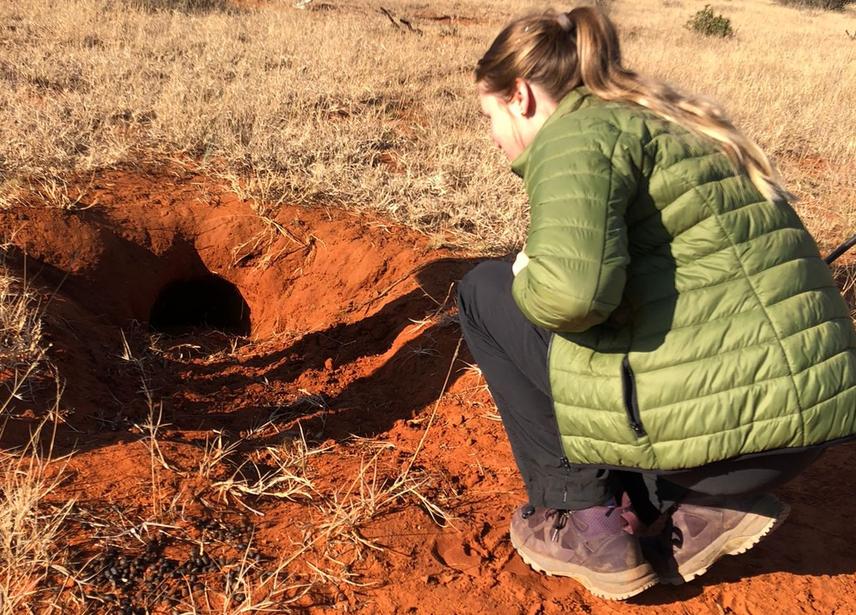Jordan Izabella Siebert
This project investigates how aardvark (Orycteropus afer) burrows function as biodiversity hotspots across contrasting landscapes: the protected Mokala National Park and neighbouring agricultural rangelands in South Africa’s Northern Cape. As a keystone species, aardvarks shape ecosystems through their extensive burrowing, which modifies soil conditions, creates thermal refugia, and offers shelter to a wide range of commensal species — including several that are vulnerable.

Jordan identifying whether a burrow is actively used by species. Spoor, droppings, freshly moved sand, no spider webs and sometimes flies all indicate potential occupancy. © Jordan Siebert.
Using camera traps, this research will assess which species use aardvark burrows, how frequently, and how patterns of use differ between natural and human-modified settings. Early findings from my MSc suggest that burrows may play a disproportionately important role in disturbed agricultural systems, where natural refuges are limited. By comparing commensal species richness, activity, and burrow use across land-use types, this project aims to deepen understanding of how agricultural landscapes can support conservation goals.
The study is grounded in the broader debate between land sparing and land sharing. While conservation areas like Mokala are vital, they are limited in extent. This research explores how managed rangelands — often overlooked — can act as complementary conservation spaces. Given that South Africa’s grasslands and Nama-Karoo biomes are under increasing threat, enhancing the ecological function of working lands is both urgent and strategic.
Importantly, the project also integrates community engagement by involving local farmers and farm workers in data collection and species identification. This participatory approach aims to build awareness of the ecological value of aardvarks and promote coexistence between agricultural production and biodiversity conservation.
Ultimately, the project will generate actionable insights to guide wildlife-friendly farming practices, reduce conflict, and promote the survival of aardvarks and the species that rely on them. By highlighting the underappreciated role of burrows in transforming fragmented landscapes into functional ecosystems, this research contributes to reconciling food security and conservation in South Africa’s drylands.
Camp in neighbouring farm. © Jordan Siebert.